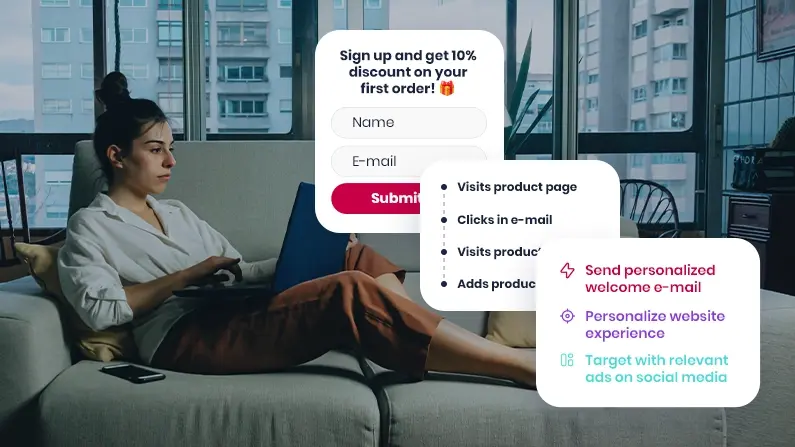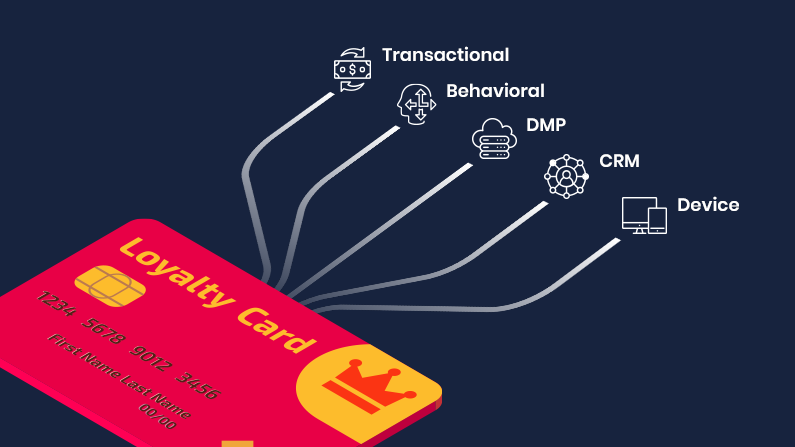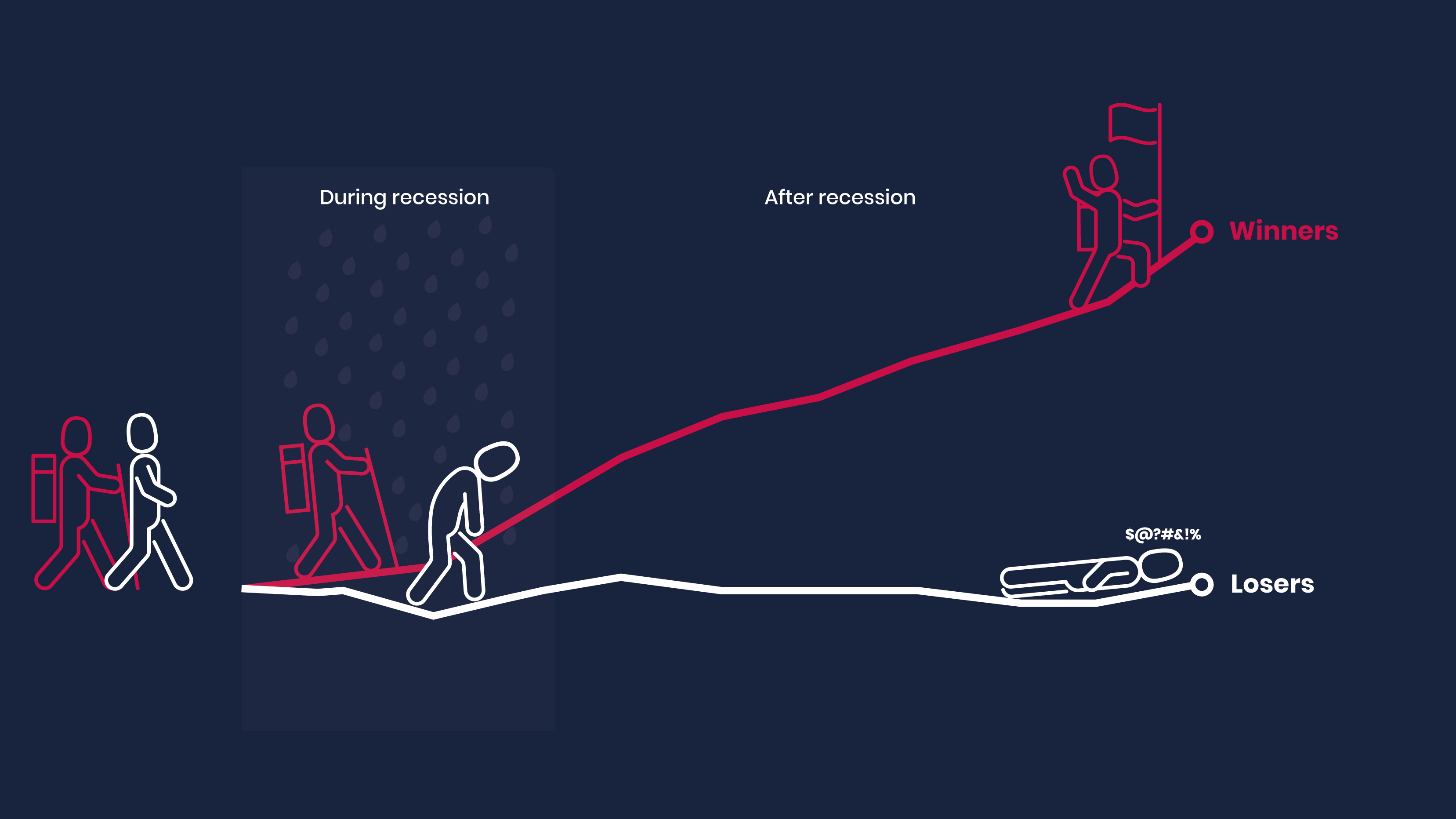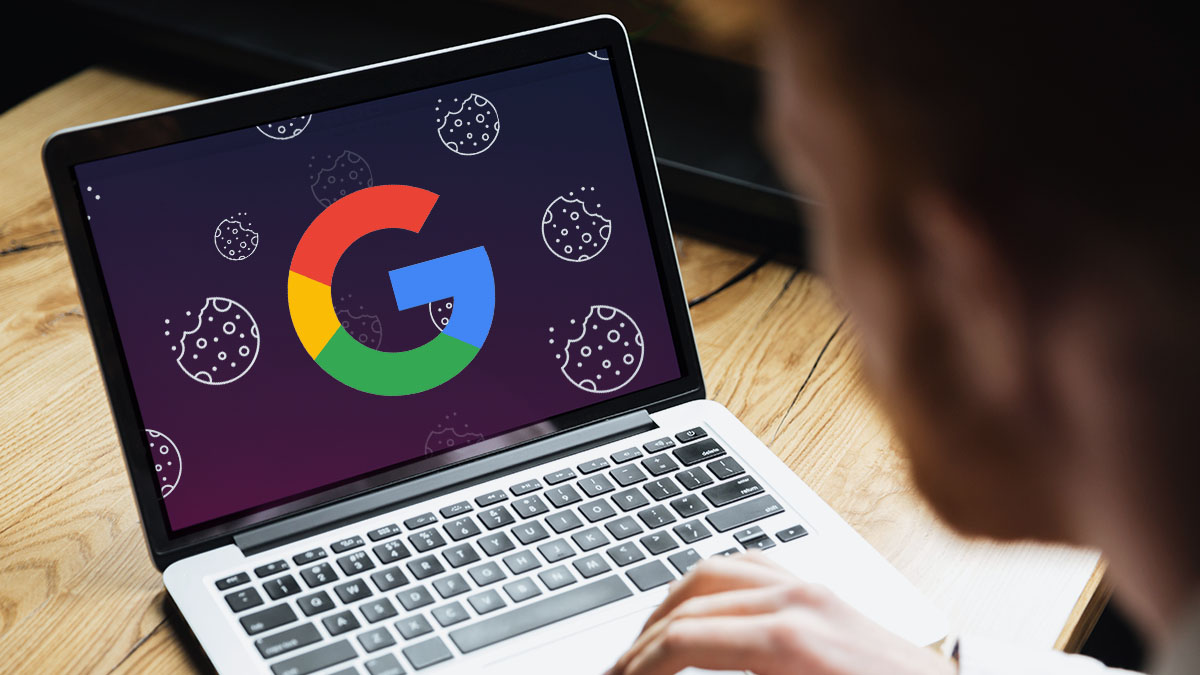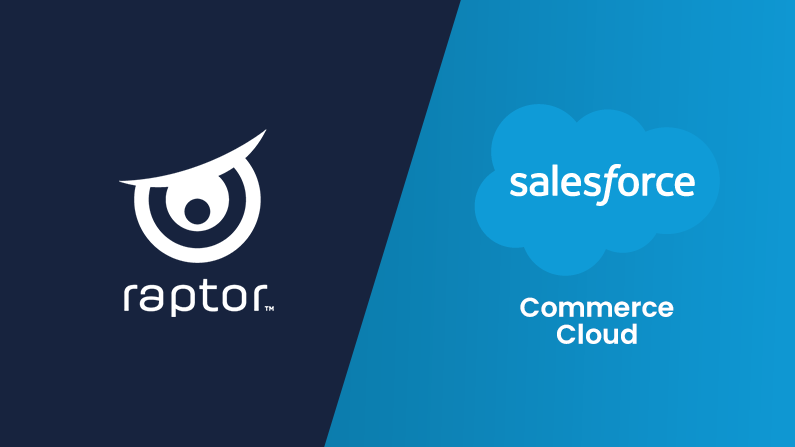Why personalization is impossible without a Customer Data Platform (CDP)
Nov 18, 2025 | CDP, Blog, 3rd Party Cookies, Customer Data Platform
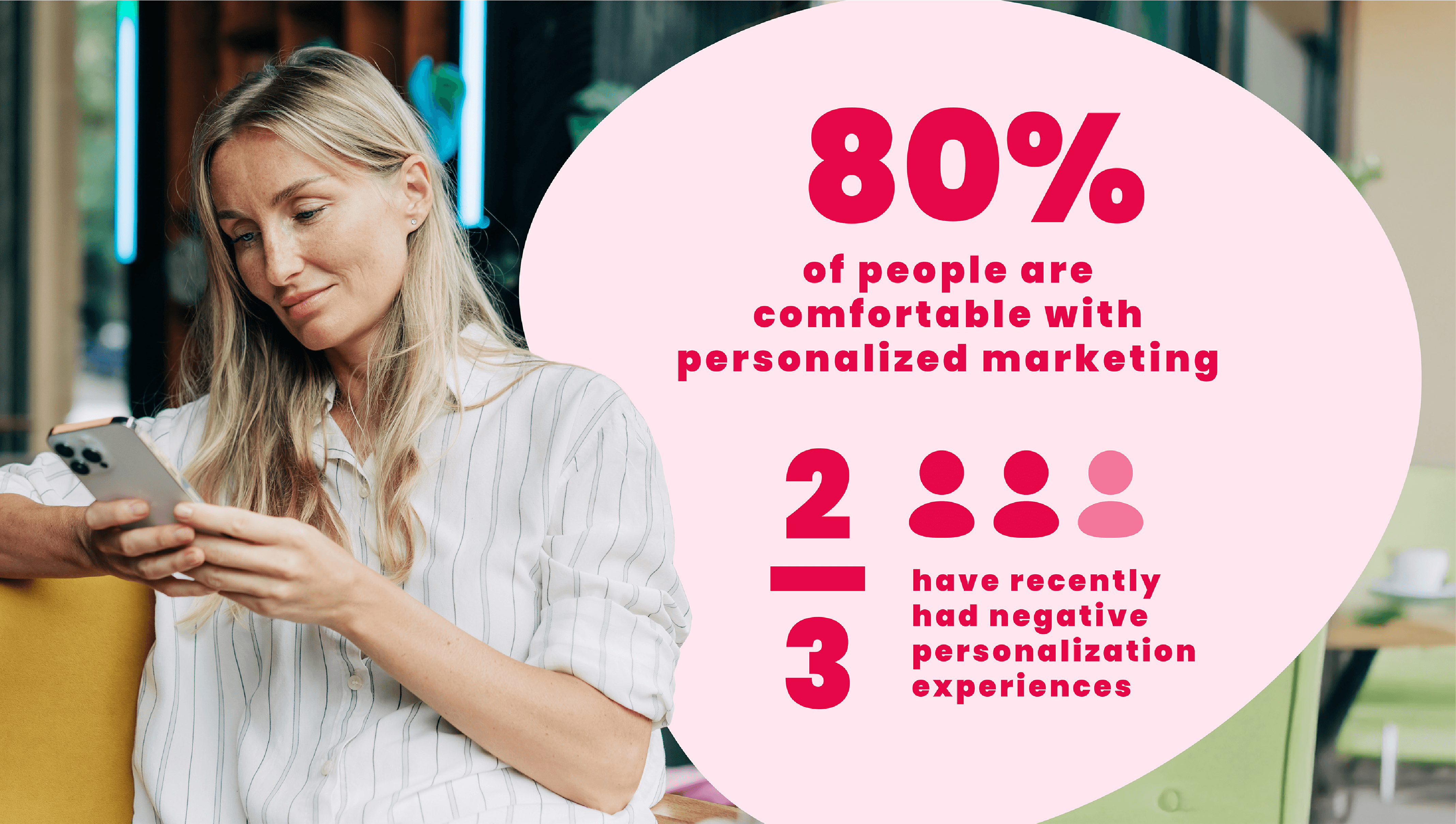
For years, marketers have been promised “personalization at scale.” You’ve probably heard it pitched in countless ways: smarter e-mail recommendations, dynamic web content, better product suggestions. And many of those tools deliver value in their own right.
But expectations have moved. Recent global consumer research shows that about 80% of people are comfortable with personalized marketing, and a large majority expect it. Yet two-thirds say they have recently had negative personalization experiences that pushed them away (BCG).
And those bad experiences usually fall into two camps:
- either the message is irrelevant, because the brand is working with incomplete data
- or it feels invasive because the brand is misusing data without context
So, the old way of doing personalization in marketing doesn’t cut it anymore.
If you’re serious about delivering a data-driven personalized experience, you need to be able to get a full view of your customers and target them where and when it matters.
That’s why true personalization today is impossible without Customer Data Platform software.
Why the old way of personalization doesn’t work anymore
A recommendation engine tied to browsing or purchase behavior can work well (we would know, as we have helped countless businesses with setups like that through the times).
But that's only one way of working with customer data.
Without taking all your data points into account - offline purchases, loyalty, engagement, transaction history etc. - you never truly get to know your customer base and how it behaves across the customer journey.
Most companies already have the right intentions, but their tools are disconnected.
- The e-mail platform knows who clicked.
- The e-commerce site knows who purchased.
- The media agency knows who saw an ad.
Yet these insights rarely talk to each other. That’s why customers keep getting irrelevant or repetitive messages.
Take a common example: A customer shows strong interest in a product and then goes ahead and buys it. Will they still get targeted with ads and e-mails for that same product? Maybe even at a lower price than they just paid? The answer is usually yes - unless your data is unified into a single customer view. And that’s exactly the type of frustrating experience that leaves a bad taste with your customers.
And better customer experiences = better business results:
- improved customer retention
- lower acquisition
- higher revenue.
Moreover, many consumers don’t trust brands to manage their data as well as they should. According to Deloitte, a full 81% of consumers say that trust in a brand’s data practices influences their buying decisions. That means you need to find a thoughtful balance between creating relevant, personalized messages to each receiver while keeping consumer trust high.
And then there’s third-party cookies. Even though Google Chrome ended their cookie phaseout plans in April 2025, everything points to the fact that third-party cookies are not running on borrowed time. They’re increasingly blocked by other major browsers, regulators don’t love them, and consumers are far more privacy-aware than they used to be. In practice, they’re already unreliable for targeting.
Instead, brands need to get serious about activating the first-party data they already own.

In short, the old way of doing personalization isn’t working anymore for three reasons:
- When data isn’t unified, the customer experience is bound to feel fragmented and fall short of customer expectations.
- Data privacy concerns are stronger than ever, which puts you in a position where you need to balance privacy and personalization.
- Third-party data, which personalization often relies on today, is not a reliable and future-proof method of data activation. The future calls for more sustainable alternatives
Why a CDP changes the game
A Customer Data Platform (CDP) creates one central source of truth when it comes to customer data. It collects and connects data from every touchpoint - web, e-mail, app, and in-store - so you finally have a complete, unified profile for each customer through a single customer view.
That unified profile is what makes true personalization possible. When your personalization is based on a CDP, it takes into account the full context of who the customer is, what they’ve done, and what they’re likely to do next.
This also makes CDPs foundational for AI-driven personalization. If, say, AI-driven chatbots are part of the vision for your brand, then you need a solid strategy for how to provide your bot with the information it needs. After all, predictive models and generative AI are only as strong as the data you feed them.
And because CDPs are built to integrate with the rest of your stack - DXPs, marketing automation tools, ad platforms, and many others - they never work in a vacuum. They pass enriched profiles, segments, and events directly into the tools that actually activate the experience.
This is where the real value shows up: faster execution, cohesive customer journeys, and a setup that can evolve as your stack does.
And then there's an arguably even more important value: consumer trust.
Trust and data protection: Why a CDP helps
Lots of companies tend to think that responsible data protection = poor personalization. And this assumption makes sense as personalization is 100% dependent on the customer data you have available.
But it’s actually not true.
In fact, the more transparent you are about the data you collect and how it’s used, the more trust you build and the more likely your customer is to share data with you.
That’s amongst the things the right Customer Data Platform (CDP) can do: Give you the complete overview of all the data available on each user. And if a person decides they no longer want to share any data with you? You can remove it all with just a simple click (a major GDPR requirement handled easily).
This is also why it’s a good idea to be mindful of the martech stack you buy into. If you operate in the European market, choosing a tech stack of purely European providers means you can rest assured that they’re working under the same strict compliance guidelines across the board.
This means no unfortunate surprises down the line, which is a big advantage, as responsibility for the protection of customer data will always fall back on you as a brand.
The spectrum of personalization
So, with all that out of the way, let’s take a look at the different forms of personalization.
Marketers often think they’re “doing personalization,” but in reality, they may only be scratching the surface. There’s a big difference between swapping someone’s first name in an e-mail and building an adaptive, cross-channel personalized customer journey that reflects their real preferences and behavior.
Understanding these levels matters, because it shows both how far your current setup can realistically take you, and why a Customer Data Platform (CDP) is required to go beyond the basics.
So, let’s look at what the different levels of personalization actually look like in practice.
Levels of Personalization
1. Basic personalization
- E-mail “Hi Mark”.
- SMS: Happy birthday, Mark.
2. Channel-specific personalization
- A recommendation engine on your website based on browsing.
- Abandoned cart e-mails triggered by e-commerce data.
- Social ads targeting.
3. Sement-driven personalization
- Targeting of broader segments like brand-lovers or certain professional roles.
4. Unified cross-channel personalization
- One customer profile that includes online + offline data (store visits, loyalty, e-mail clicks, purchase history).
- Campaigns across web, app, e-mail, and ads depending on what the customer just did.
5. Predictive and adaptive personalization
- Using CDP + AI and CLV to predict intent, churn risk, or product affinity.
- Experiences that adapt as the customer moves along their journey.
Whether you’re ready to start small with data activation or go all-in with cross-channel personalization, each package is designed to meet you where you are and grow with your ambitions.
With Raptor’s CDP, you’ll always be delivering personalization at the highest levels.
Frequently Asked questions
Isn’t a recommendation engine enough for personalization?
It used to be - but not anymore. A recommendation engine can suggest products based on browsing or purchase history, but it only works with the data it sees. Without connecting that data to everything else you know about a customer, you risk sending irrelevant or repetitive messages. A CDP ensures personalization is based on the whole customer, not just a fragment.What’s the difference between a CDP and a CRM?
A CRM (Customer Relationship Management system) is designed primarily for sales and service teams. It stores contact details, deals, and customer interactions. A CDP, on the other hand, ingests data from every touchpoint - web, e-mail, in-store, apps, ads - and builds a single customer view that can be used for better personalization and targeting. And unlike a CRM, a CDP is built to activate that data across channels. Still, sales and service teams also benefit: With a CDP, they get a unified view of each customer, making service more personal and relevant.Can’t I just rely on third-party data?
Third-party cookies are disappearing, and consumer trust is fragile. Even though Google ended its official third-party cookie phaseout plans, all signals point to a future where third-party data plays a much smaller role. First-party data, unified and activated through a CDP, is the sustainable path.Even if personalized marketing isn’t on your roadmap yet, it’s a clear advantage to start organizing your first-party data as soon as possible, as it’s widely considered a much more future-proof and privacy-conscious strategy compared to third-party data.
Isn’t personalization risky for data privacy?
It can be if you don’t have the right processes in place. A CDP doesn’t manage consent directly (that happens in the platforms where data is collected), but it does make it simple to act on customer rights, such as the GDPR “right to be forgotten.” With a CDP, you can easily delete all data tied to a single individual across every connected system.And while a CDP can work with all types of customer data (including third-party data), it's main advantage is its ability to collect and activate zero-party and first-party data, arguably the most valuable types. These are data your customer willingly shares with you, data you own as a business, and data that only grows with time.
How long does it take to see value from a CDP?
It depends on your scope and goals, but many businesses see measurable improvements within the first few months, such as reduced wasted ad spend or higher e-mail engagement. The real value compounds over time, as more data flows into the platform and models get sharper.
For example, one Raptor CDP user saw 16x higher ROI from CDP-based segments compared to other segmentation methods in the first few months.
 How to accelerate your business with a Customer Data Platform
How to accelerate your business with a Customer Data Platform
– Better targeting, smarter personalization & stronger results
Related Content
You might also like
Do you transform your Black Friday encounters into lasting relationships? Or do you let this annual...
Learn More
No reason to sugarcoat it. E-commerce is facing a lot of challenges right now. Chinese giants like...
Learn More
It’s a name that’s impossible to ignore. No matter how hard you try. TEMU. The Chinese giant has...
Learn More
Stakes are incredibly high in fashion. With a global market value of predicted to reach 1.2...
Learn More
Loyalty is key No matter what corner of e-commerce you’re in, everyone can agree on one thing:...
Learn More
Like lots of marketers, you may have been told to find a way to achieve the same (or maybe better!)...
Learn More
We are all feeling the crisis (or rather, a series of crises one after another). It affects our...
Learn More
In 2020, Google decided to phase out third-party cookies, and they recently added a final nail to...
Learn More
When you work in ecommerce, you know the traffic during Black Friday is certainly higher than...
Learn More
Is your brand using Salesforce Commerce Cloud? And are you wondering what your options are in terms...
Learn More
Let us show you what you can achieve with premium personalization


A Raptor expert can share more about the product and answer any questions you have.










